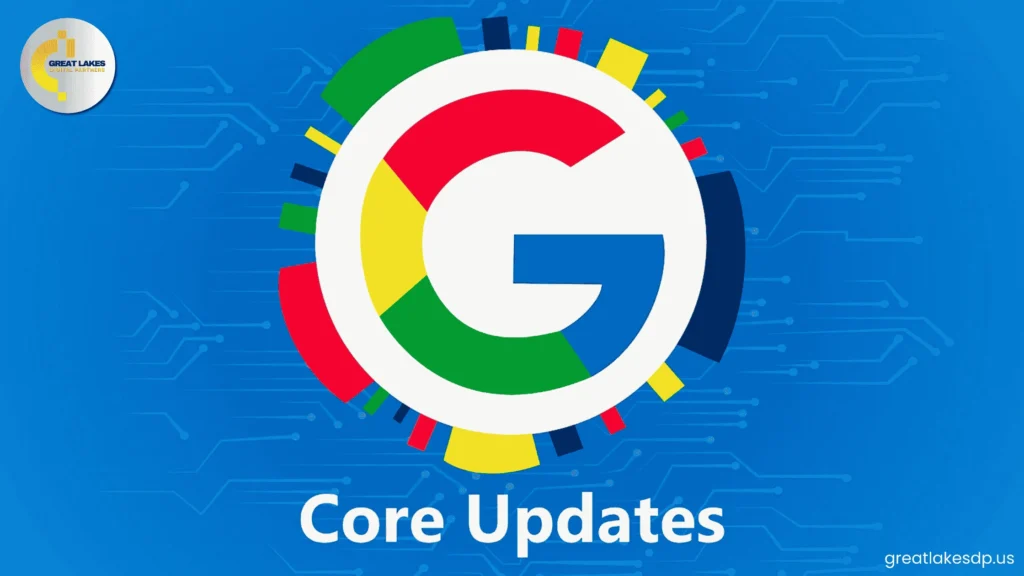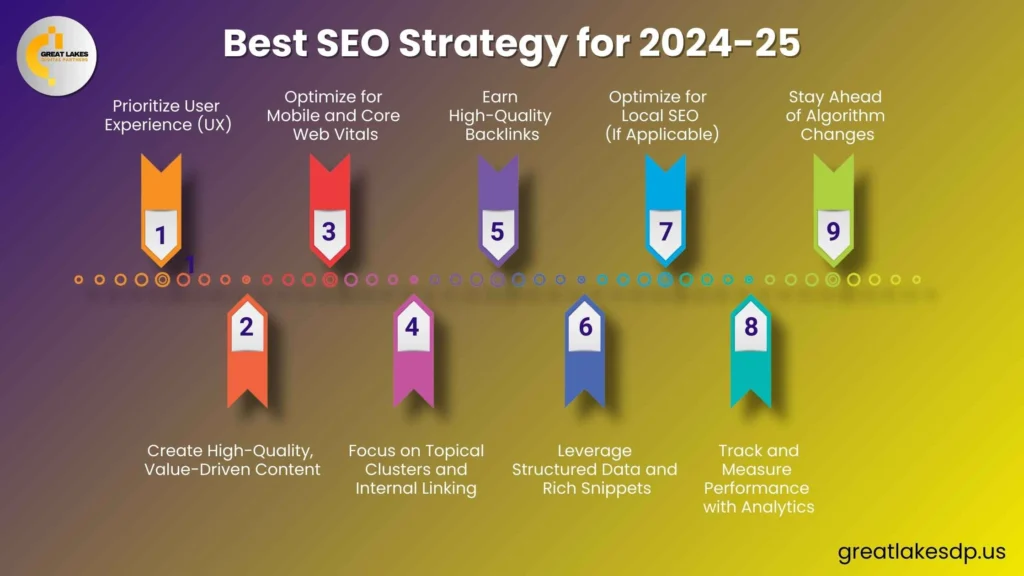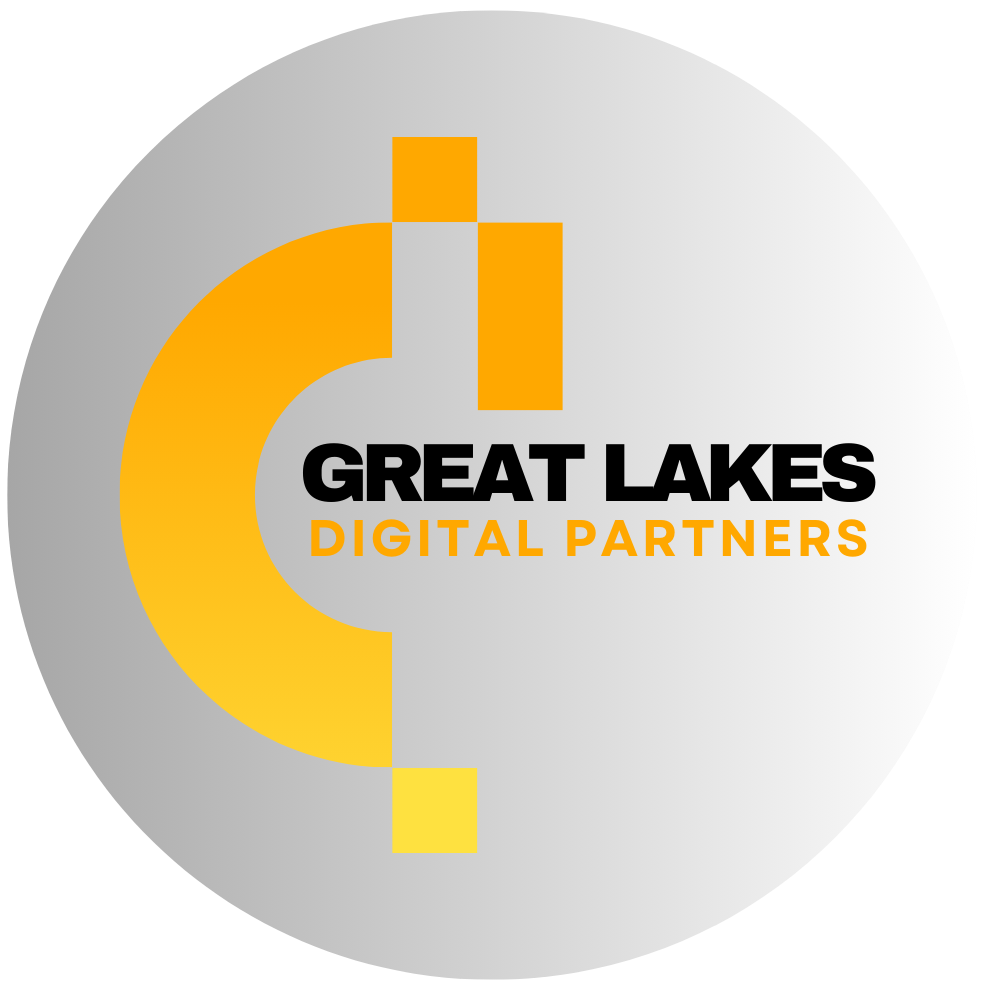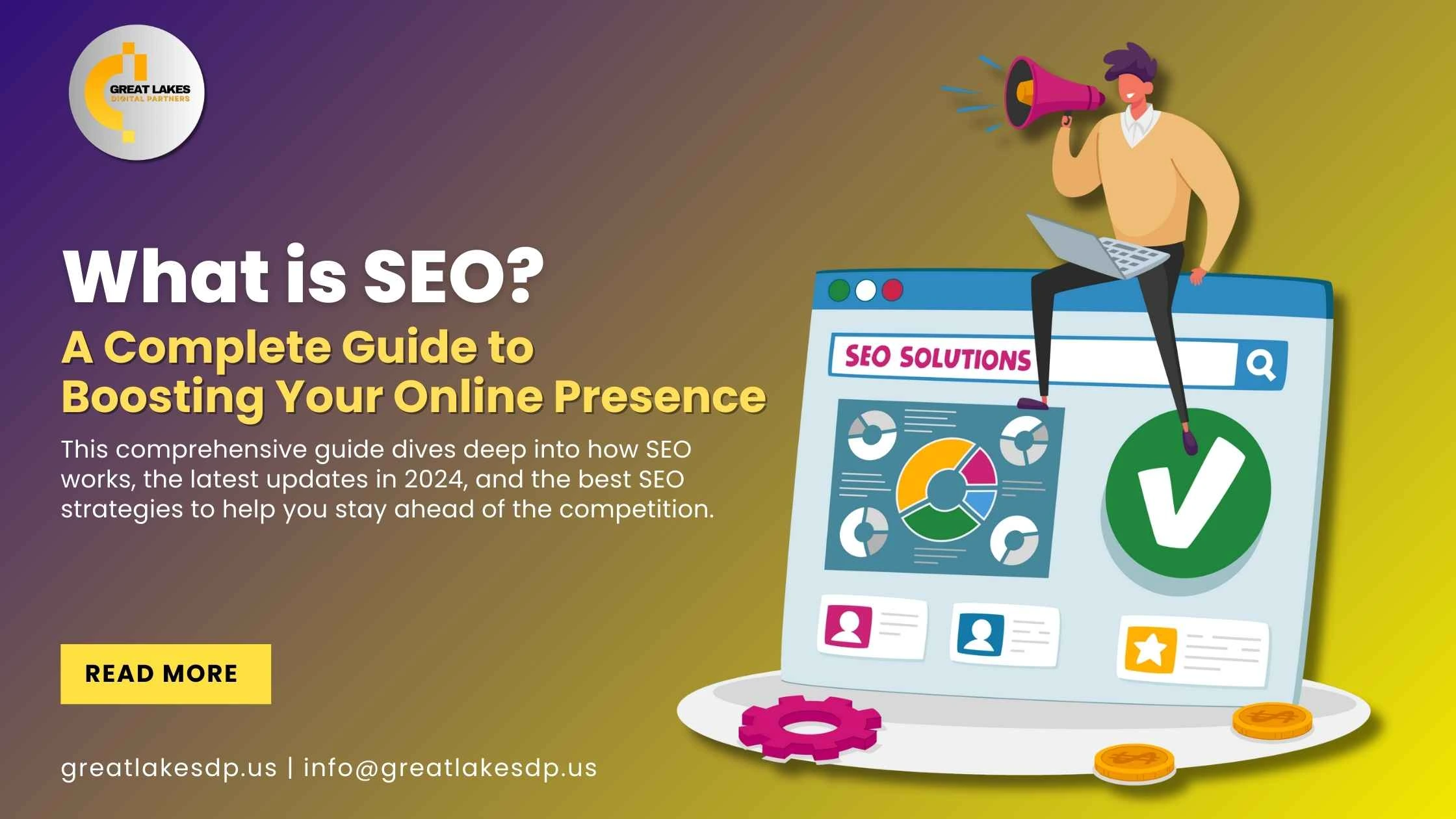For all kinds of businesses with online presence, the competition is fierce, and the online landscape is constantly evolving; SEO in digital marketing has become one of the most essential tools for businesses seeking success. Search Engine Optimization (SEO) is more than just optimizing keywords; it’s a strategic approach to enhancing your website’s visibility and ranking on search engines like Google, driving organic traffic to your site.
This comprehensive guide dives deep into how SEO works, the latest updates in 2024, and the best SEO strategies to help you stay ahead of the competition.
Let’s get started!
Table of Contents
ToggleWhat is Search Engine Optimization(SEO)?

SEO, or Search Engine Optimization, is the process of improving your website’s visibility on search engines for relevant search terms. The goal is simple: increase your site’s ranking on search engine results pages (SERPs) to drive more organic traffic. SEO in digital marketing plays a critical role in helping businesses connect with their target audience by delivering relevant content that meets user intent.
SEO, however, goes beyond simply adding keywords to your content. It encompasses a variety of strategies, including on-page optimization, off-page techniques, and technical SEO improvements, which we’ll discuss in detail below.
What are the Types of SEO?
1. On-Page SEO: Optimizing Your Website Internally
On-page SEO refers to all the optimization activities that are conducted directly on your website. These activities ensure that both search engines and users find your content relevant and easy to consume.
Key Elements of On-Page SEO:
Keyword Optimization: Identify and use the right keywords that your audience is searching for. This includes strategically placing them in your headings, meta descriptions, and throughout the content. Resources such as Google Keyword Planner and SEMrush can assist with this process.
Content Quality: Content is still king when it comes to SEO. Make sure your content is meaningful, pertinent, and insightful. Google’s algorithm prioritizes content that provides a meaningful experience for users and answers their queries.
Meta Tags and Descriptions: Meta titles and descriptions are critical for both SEO and click-through rates. Ensure they are descriptive and enticing, and include your primary keyword.
Internal Linking: Direct visitors to other relevant pages on your website through strategic internal links. This not only improves the user experience but also helps search engines crawl your site more efficiently.
2. Off-Page SEO: Building Authority Beyond Your Website
Off-page SEO focuses on external activities that influence your website’s rankings. It’s about establishing your site as a trustworthy and authoritative resource in your industry.
Key Elements of Off-page SEO:
Backlink Building: Backlinks from credible, authoritative websites signal to Google that your site is trustworthy and valuable. Focus on building high-quality backlinks through guest posts, influencer collaborations, and networking with industry peers.
Social Media Engagement: Active engagement on social media platforms helps to increase brand visibility and drive traffic to your site. It also serves as a signal to search engines that your content is engaging and valuable.
Brand Mentions and PR: Getting mentioned by authoritative sources or in industry publications can boost your brand’s visibility and authority, leading to improved search engine ranking.
3. Technical SEO: The Backbone of Website Optimization
Technical SEO guarantees that your website complies with the technical standards set by search engines. It goes beyond content and looks at how well your site performs, how easily it can be crawled by search engines, and how well it delivers a good user experience.
Key Elements of Technical SEO:
Site Speed: A fast-loading website improves user experience and increases your chances of ranking higher in search engine results. Google considers page speed as a ranking factor, so it’s essential to compress images, minify CSS and JavaScript, and use a reliable hosting service.
Mobile Optimization: With Google’s mobile-first indexing, it’s crucial to ensure that your website performs well on mobile devices. A responsive design, fast mobile load times, and a user-friendly interface are critical for maintaining a high search engine ranking.
Secure Website (HTTPS): Sites secured with HTTPS (Hypertext Transfer Protocol Secure) have an advantage in search engine rankings. HTTPS ensures that data between the user and the website is encrypted, enhancing security and user trust.
Structured Data Markup: Using structured data, or schema markup, helps search engines understand the content of your site better, increasing the likelihood of appearing in rich snippets, which can significantly boost your visibility.
So These are major types that how SEO works and get better results for your website.
Why Does Every Business Need SEO in 2024 and Beyond?
| Reason | Description |
| Increased Visibility & Traffic | SEO improves your website’s visibility on search engines, attracting more organic traffic. |
| Credibility & Trust | Higher rankings build user trust, as users perceive top-ranking sites as more credible and authoritative. |
| Cost-Effective Marketing | SEO is a long-term investment that generates organic traffic without ongoing costs, unlike paid ads. |
| Better User Experience (UX) | SEO enhances user experience by improving site speed, mobile-friendliness, and content quality. |
| Competitive Advantage | SEO allows you to compete effectively by ensuring your website is visible when customers search online. |
| Higher Return on Investment (ROI) | SEO drives targeted traffic, leading to better conversions and a higher ROI compared to other strategies. |
| Long-Term Success | SEO builds long-term authority and consistent traffic growth over time, unlike temporary paid ads. |
Major Google SEO Updates in 2024

Keeping up with Google’s updates is critical for maintaining a strong SEO strategy. Google’s algorithm evolves regularly to provide users with the best possible results. Some of the major updates for 2024 include:
Core Web Vitals Update: Page experience remains a priority for Google, and the 2024 update focuses heavily on metrics like loading speed, interactivity, and visual stability. Sites that optimize for these aspects are likely to rank higher.
E-E-A-T (Experience, Expertise, Authoritativeness, Trustworthiness): Google continues to emphasize the importance of high-quality content that demonstrates expertise and authority in the subject matter, favoring websites that establish trust with their audience.
Helpful Content Update: Google’s new algorithm rewards content created for people rather than search engines. Websites producing valuable, user-centric content are more likely to achieve better rankings, while keyword-stuffed, low-quality content is penalized.
Best SEO Strategy for 2024-25

As SEO continues to evolve, crafting a strong and future-proof strategy is essential to stay ahead in the increasingly competitive digital landscape. The best SEO strategy for 2024-25 revolves around a holistic approach that prioritizes user experience, content quality, technical optimization, and adherence to the latest search engine algorithm updates. Below is a comprehensive breakdown of the ideal SEO strategy for businesses looking to succeed over the next few years.
1. Prioritize User Experience (UX)
Google’s focus on user experience (UX) has never been stronger, particularly with the Core Web Vitals update. Websites that deliver fast, responsive, and stable user experiences will see improved rankings in 2024 and beyond.
Key Actions:
Optimize Page Speed: Use tools like Google PageSpeed Insights and GTMetrix to identify slow-loading elements on your site and make necessary optimizations.
Improve Interactivity: Minimize the time it takes for users to interact with your site. Ensure buttons, forms, and links are responsive and quick to load.
Visual Stability: Avoid unexpected layout shifts as pages load. Ensure that content remains visually stable as elements render, improving user satisfaction.
2. Create High-Quality, Value-Driven Content
Content remains at the heart of SEO, but the type of content that ranks well has shifted. Google’s Helpful Content Update emphasizes content written for users rather than search engines, which means keyword stuffing is no longer effective. Instead, the focus should be on creating well-researched, engaging, and valuable content that aligns with user intent.
Key Actions:
Address User Intent: Understand the intent behind the keywords you’re targeting and ensure your content answers users’ questions or solves their problems.
Build Topical Authority: Establish authority by covering topics comprehensively. This means not only targeting high-volume keywords but also addressing related subtopics that provide a complete understanding of the subject.
E-E-A-T: Ensure your content reflects Experience, Expertise, Authoritativeness, and Trustworthiness (E-E-A-T). Content produced by experts in your field that includes citations, references, and data is more likely to rank highly.
3. Optimize for Mobile and Core Web Vitals
Mobile-first indexing is now the standard, and optimizing for mobile performance is critical. Google prioritizes the mobile version of your site for ranking purposes, and poor mobile experiences can severely damage your SEO performance.
Key Actions:
Responsive Design: Ensure your website adapts seamlessly to different screen sizes, providing the same level of usability across all devices.
Mobile Page Speed: Since mobile users expect fast load times, ensure images are compressed, CSS and JavaScript files are minimized, and your hosting service is optimized for mobile traffic.
Core Web Vitals: Improve metrics like Largest Contentful Paint (LCP), First Input Delay (FID), and Cumulative Layout Shift (CLS) to ensure a smooth mobile experience.
4. Focus on Topical Clusters and Internal Linking
Google’s algorithms are increasingly favoring websites that demonstrate deep topical expertise. The cluster model, which involves organizing content around a core topic and linking to related subtopics, helps search engines understand the breadth and depth of your content.
Key Actions:
Create Pillar Pages: Develop comprehensive guides around core topics (e.g., SEO in digital marketing) that act as the foundation for related subtopics.
Build Content Clusters: Surround your pillar content with cluster content that addresses specific questions or subtopics related to the core theme. For example, subtopics around SEO might include “on-page SEO techniques” or “how SEO works.”
Strengthen Internal Linking: Use internal links to connect your pillar and cluster content, creating a strong content hierarchy that boosts site structure and improves crawlability.
5. Earn High-Quality Backlinks
Backlinks remain a crucial factor in determining SEO rankings. However, not all backlinks are created equal. High-quality, relevant backlinks from authoritative sites carry far more weight than a large number of low-quality links.
Key Actions:
Focus on Relevance: Build backlinks from reputable websites that are relevant to your industry or niche. Search engines value links from sites that have topical relevance to your content.
Guest Posting and PR: Contribute valuable content to authoritative websites in exchange for backlinks. Additionally, developing a solid PR strategy can help earn organic backlinks from media coverage and industry publications.
Monitor Toxic Backlinks: Use tools like Ahrefs or SEMrush to identify and disavow toxic backlinks that could harm your SEO performance.
6. Leverage Structured Data and Rich Snippets
Structured data, also known as schema markup, helps search engines better understand your content. By adding structured data to your pages, you improve the chances of your site being featured in rich snippets, which can significantly increase your click-through rates.
Key Actions:
Implement Schema Markup: Add structured data for key pages, such as product pages, FAQs, articles, and reviews. This enhances your chances of being displayed as a rich snippet in search results.
Focus on Featured Snippets: Optimize your content to answer specific questions directly. Include bullet points, concise definitions, and numbered lists to increase your likelihood of being featured in position zero (featured snippet).
7. Optimize for Local SEO (If Applicable)
Local SEO is essential for businesses aiming to reach local audiences. Ensuring that your business appears in local search results, Google Maps, and “near me” searches can drive targeted traffic and increase conversions.
Key Actions:
Claim and Optimize Google Business Profile: Make sure your Google Business Profile is claimed, verified, and fully optimized with up-to-date contact information, business hours, and photos.
Target Local Keywords: Use location-based keywords that are specific to your region (e.g., “SEO agency in Michigan“). This enhances your visibility in local search results.
Get Local Reviews: Encourage satisfied customers to leave positive reviews on Google and other review platforms. High-quality reviews improve trust and can boost your local search rankings.
8. Track and Measure Performance with Analytics
SEO is an ongoing process, and continuous monitoring and analysis are critical to ensure your efforts are paying off. Tools like Google Analytics and Google Search Console provide valuable insights into your site’s performance and areas for improvement.
Key Actions:
Set Measurable KPIs: Track key performance indicators (KPIs) such as organic traffic, bounce rates, time on site, and conversion rates to measure the effectiveness of your SEO strategy.
Perform Regular SEO Audits: Conduct regular SEO audits using tools like Screaming Frog, SEMrush, or Ahrefs to identify technical issues, broken links, duplicate content, and other factors that could be impacting your performance.
Adjust Based on Data: Use insights from analytics to continuously refine your SEO strategy. If certain content pieces aren’t performing well, revisit and optimize them based on user behavior and search trends.
9. Stay Ahead of Algorithm Changes
Google’s algorithm is constantly evolving, and staying updated on the latest changes is crucial for maintaining your rankings. By proactively adapting your SEO strategy to new algorithm updates, you can ensure long-term success.
Key Actions:
Follow Industry News: Stay informed by following trusted sources such as Google’s Webmaster Central Blog, Moz, and Search Engine Land.
Adapt Quickly: When Google rolls out major updates, be ready to assess how they impact your site and make the necessary adjustments to your SEO strategy.
| SEO Type | Focus Area | Importance |
| On-Page SEO | Content, meta tags, headings, internal linking | Improves relevance and user experience |
| Off-Page SEO | Backlinks, social media, influencer partnerships | Builds authority and trust with search engines |
| Technical SEO | Site speed, mobile optimization, HTTPS, structured data | Ensures proper crawling, indexing, and optimal user experience |
How SEO in Digital Marketing Drives Business Success?
SEO in digital marketing drives business success by making your website more visible to potential customers. By improving your search engine ranking through a combination of on-page, off-page, and technical SEO, you can increase organic traffic, build trust with your audience, and ultimately boost conversions. An effective SEO strategy positions your brand as a leader in your niche, allowing you to connect with customers at the exact moment they are searching for your products or services.
Great Lakes Digital Partners – The Best SEO Agency in Michigan

An SEO agency in Michigan can significantly boost your website’s rankings and drive traffic by developing a customized strategy tailored to your business goals. They begin with thorough keyword research, optimizing your website’s content, meta tags, and structure to target high-value search terms that attract the right audience.
The agency also enhances your site’s technical aspects, such as improving page speed and mobile responsiveness, while building high-quality backlinks to increase your domain authority. Additionally, they focus on local SEO to ensure your business appears in local search results and Google Maps, driving more targeted traffic.
Through continuous monitoring and adjustments, the agency ensures your website achieves and maintains higher rankings, bringing in sustained organic traffic over time.
Looking to elevate your SEO strategy and improve your search engine ranking? At Great Lakes, we specialize in providing customized SEO solutions that drive results. As a leading SEO agency in Michigan, we understand how SEO works and are here to help you optimize your website for maximum performance. Reach out to us today, and let’s work together to expand your online presence!
FAQs About SEO in Digital Marketing
1. What is the role of content in SEO in digital marketing?
High-quality content is the backbone of SEO. It provides value to users, answers their questions, and helps your website rank higher in search results. Google rewards content that is user-focused, authoritative, and informative.
2. How do backlinks affect search engine ranking?
Backlinks are an essential factor in off-page SEO. They signal to search engines that other credible websites consider your content valuable. High-quality backlinks from authoritative sites help improve your site’s ranking and visibility.
3. What are Core Web Vitals, and why are they important?
Core Web Vitals are a set of performance metrics that Google uses to evaluate the user experience on your site. These factors encompass page load speed, user interaction, and visual consistency. Optimizing for Core Web Vitals can improve both user experience and search engine ranking.
4. How does mobile optimization influence SEO?
With mobile-first indexing, Google gives priority to the mobile version of your website when deciding its rankings.
Ensuring that your site is mobile-friendly improves your chances of ranking higher, as it provides a better experience for users browsing on smartphones or tablets.
5. What is structured data, and how does it help with SEO?
Structured data (schema markup) helps search engines understand the context of your content. It can also enhance your search results by displaying rich snippets, such as reviews, prices, and event details, making your site more appealing to users and increasing click-through rates.


